I'm working on a predictive model. My model predictions don't always come out as a standard distribution. I want to transform, or fit the distribution values so that the distribution is fit to a bell curve. It's like I want a sort of transformation function that will transform my distribution into a bell curve (not necessarily normalized).
For example, here is what my distribution looks like:
Notice that the distribution is somewhat skewed and not perfectly standard/shaped like a bell curve.
Here is something close to what I want that distribution to look like:
NOTE: This is not the perfect distribution either, just closer
NOTE: I'm not trying to normalize the values, just fit the distribution. Notice that the goal distribution is not normalized.
I thought I could use something with scipy.norm or numpy but I can't seem to find exactly what I want.


